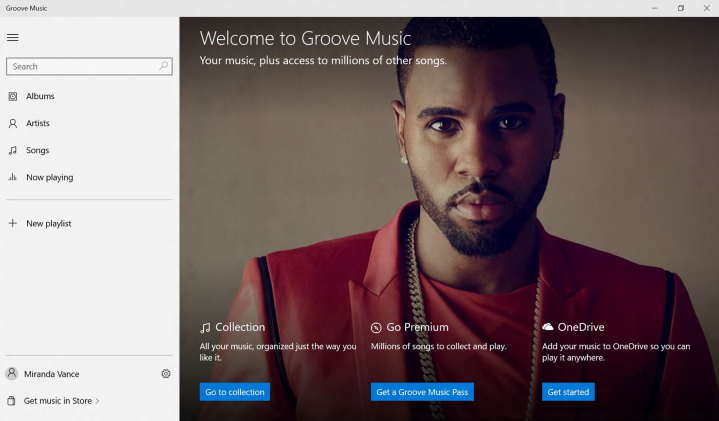
Microsoft says the purpose of the relaunch is to make the service “more identifiable for our broad customer base.” Microsoft’s Joe Belfiore says the Xbox branding was too confusing for customers, the majority of whom mistakenly (but understandably) assumed the service was an inextricable part of Microsoft’s game console. By contrast, the Groove name is “more intuitive” and “describes what people feel and do with music,” Microsoft says (or in plainer language, generic enough to avoid the same sort of misperception).
The new Groove, unlike Xbox Music, won’t launch with a free, ad-supported listening tier. That omission stems from Microsoft’s decision in December to discontinue gratis streaming on Windows devices, then citing the need to focus on “[delivering the] ultimate music purchase and subscription service experience for our customers.”
Oddly, Groove seems a contradiction of that vision. It appears to place a greater emphasis on your pre-existing music library than paid-for streaming, letting you upload your MP3 collection (thanks to OneDrive integration) to Microsoft’s cloud for playback to Windows, Android, and iOS devices, plus Xbox and the Web. The $9.99 a month ($99 a year) premium Groove seems almost incidental — just like the deprecated Xbox Music, you can download, stream, or create radio stations from its 40 million-song catalog.
Groove’s subscription component may leave a bit to be desired, but Microsoft’s put effort into sprucing up the desktop client. You can pick an accent color to choose suit your mood, and the new app features a bevy of navigational improvements — a slide-out panel, playback controls above the Taskbar icon, and a new contextual menu option for pinning albums to the Start menu top the list. Touchscreen controls have been revamped, too — you can now pinch to zoom in or out of views and drag songs into playlists.
The updated Groove app and service will ship as part of the next Windows Insiders build, scheduled to hit sometime this week. A wider launch is scheduled for Windows 10’s release date, July 29.
So how does Groove compare to the competition, exactly? Well, but perhaps not well enough. Supplementing streaming libraries with your own digital collection is nothing revolutionary — the newly launched Apple Music offers it, as has Google Play Music for years — and custom radio stations are a staple of practically every subscription music service. Microsoft differentiated the early, $15 a month Zune Music Pass by offering subscribers the ability to keep a number of songs permanently. In launching Groove without any such compelling feature, Microsoft hasn’t done its rebranded music plan any favors.


